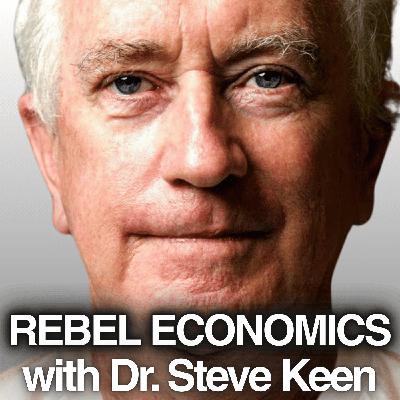"Mainstream economists proved wrong again" Top Economist
Description
Learn 50+ Years of Economics in Only 7 Weeks, by applying here: https://www.stevekeen.com
(Plus get Ravel — the economic visualization software used in this video — as a bonus if you’re accepted and join.)
Top Economist Steve Keen explains how government money is actually created — and why most of the money in circulation still comes from private bank lending, not the printing press. With clear double-entry accounting and Ravel demos, Steve shows how deficits create deposits and reserves, why “reserves aren’t money,” and how open-market operations change the mix of assets without magic money trees or looming doomsday math.
In this breakdown, you’ll discover:
✅ Cash vs digital money: why the press in DC is a sideshow
✅ Government spending and taxes in the ledger: deposits up, taxes down — what really changes
✅ Reserves 101: what banks can and can’t do with them (and why they aren’t “spendable” money)
✅ Deficit mechanics: why deficits create both money and reserves, surpluses destroy them
✅ The eight entries you need to model government money creation (beyond simple double entry)
✅ Why “borrowed from the private sector” is an accounting myth in loanable-funds models
✅ How OMOs and QE actually work: when they create money, when they don’t
✅ The data picture: since 2000, most new money has been credit-backed (private), not fiscal
✅ Why government negative financial equity is normal — and necessary for private net financial assets
Key insights:
• Deficit is not a bug — it’s the feature that creates net financial assets for the private sector.
• Reserves are bank-to-central-bank balances; they support payments and bond settlement, not your latte.
• Open-market operations with non-banks can create money; purchases from banks swap assets inside the banking system.
• Loanable-funds thinking explodes government debt in theory because it excludes money creation in the first place.
• Accounting done properly shows government negative financial equity mirrors private positive equity.
-----
What did you think of the eight-entry walkthrough and the OMO/QE distinctions? Share your thoughts below.
Subscribe for reality-based economics
Like if this clarified how deficits, reserves, and QE actually work
Share to help others move beyond textbook myths
-----
Who is Dr. Steve Keen?
Dr. Steve Keen is an economist known for accounting-consistent, data-driven models that explain how bank money, private debt, and policy operations shape the real economy. Creator of the Minsky and Ravel tools, he replaces classroom analogies with operational mechanics — essential for engineers, finance professionals, and anyone who wants clarity over ideology.
Learn 50+ Years of Economics in Only 7 Weeks, by applying here: https://www.stevekeen.com
(Plus get Ravel — the software used in this video — as a bonus if you’re accepted and join.)
#usshutdown #finance #BankingSystem #QE #economics #money #Macroeconomics #government





